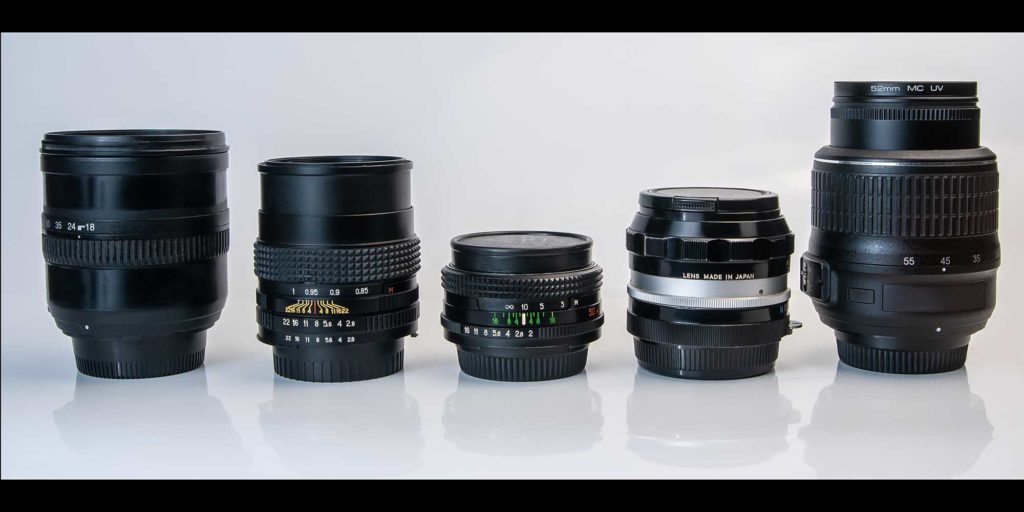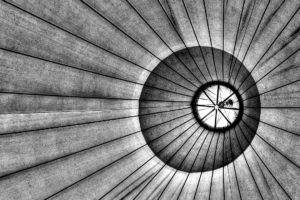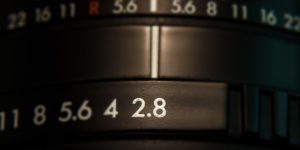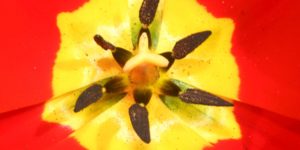Most beginner photographers will spend a lot of time grappling with the exposure triangle until they can produce perfect exposures every time. And rightly so!
Yet lens focal length is a topic that many noobs overlook. The reason for this is obvious; it’s not necessary to understand lens focal length in order to produce a technically acceptable photo.
You just put the lens on your camera, and shoot.
But photography is not just about technical perfection, but also creative control.
And in order to become fluent in photography and consistently achieve the results you want, you will need to gain a solid understanding of focal length.
Not only that, but a failure to understand focal length can mean buying the wrong tool for the job – in the form of an unsuitable lens.
Clearly, then, there’s also an economic motivation for understanding focal length.
However, as lens focal length influences so many different aspects of a photo, it can at first seem like a highly confusing subject.
It really doesn’t need to be though!
In this guide I explain everything you need to know in order to work with different focal length camera lenses in total confidence.
Why You Need to Understand Lens Focal Length
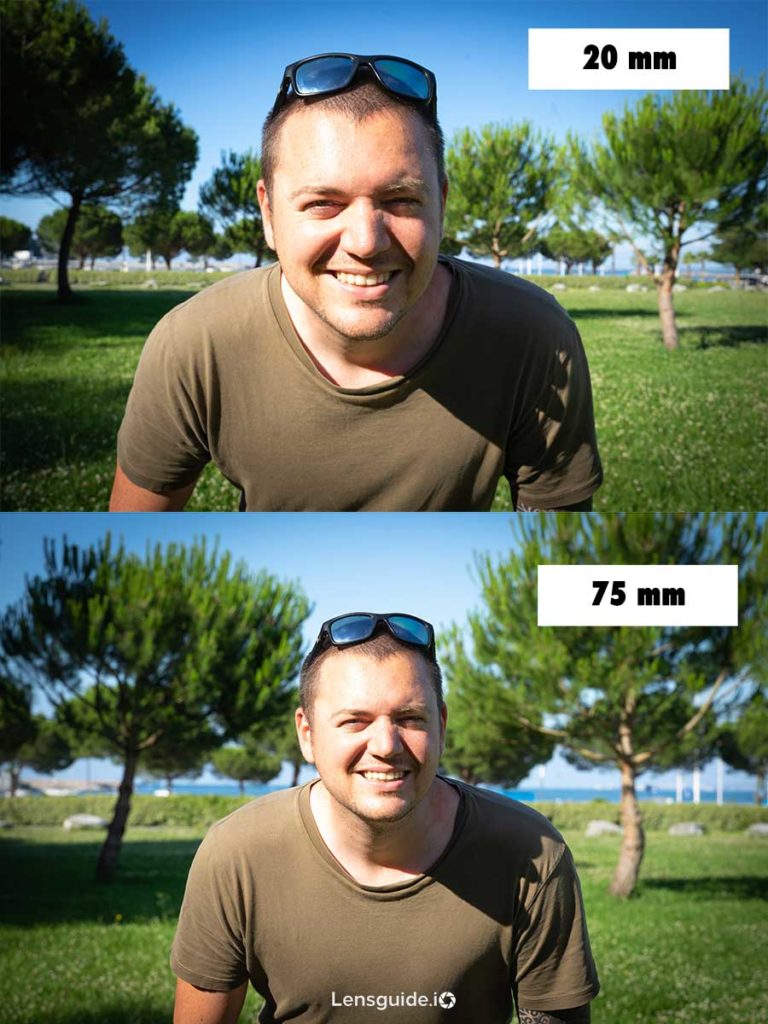
Camera lenses can be intimidating things. Even just their names often come with a barrage of confusing and highly technical-looking letters and symbols. And some elements of this cryptic cipher are more important for the user to understand than others.
For example, some signify the type of autofocus motors used by the lens; but arguably for most users all that matters when it comes to AF are the results, not the technical specifications.
Meanwhile many are simply the manufacturers’ proprietary terms for their fancy optical lens coatings and similar specs; again, either the lens produces good images or it doesn’t, but understanding these arcane symbols won’t make any practical difference to your photography.
Other info contained in lens product names is much more important, though. For a start, the “f/” number refers to its maximum aperture; i.e. its ability to capture light. As photography is all about capturing light, clearly this is an essential bit of information that you’ll need to understand before purchasing a lens.
And it’s the same with the numbers indicating the focal length of a given lens. You’ll easily recognize these numbers, as they are always expressed in millimeters (mm) – even in regions of the world that don’t traditionally use the metric system. For example: “50mm” or “24-70mm.”
As you’ll see later in this guide, choosing a lens with a different focal length will drastically alter the look of the resulting photograph. This means that any decision you make regarding focal length is a creative decision.
As a result, beyond exposure and composition, understanding focal length is one of the most important steps you will need to take in mastering photography.
What Is Focal Length in Photography?
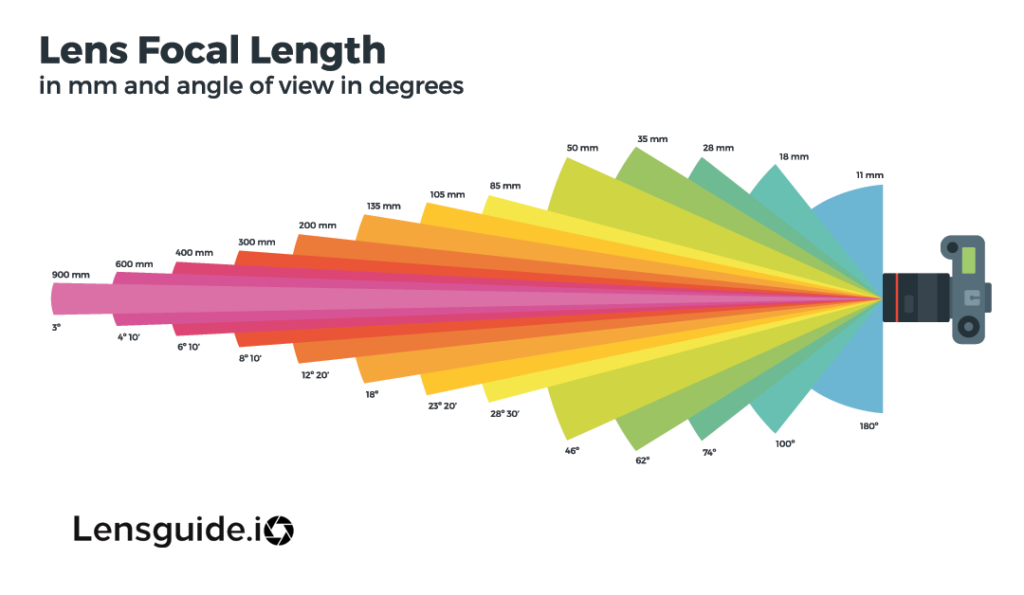
Very simply put, the focal length of a lens indicates the distance between two very important points: the point within the lens where light rays converge to form a sharp image, and the image sensor inside your camera.
As lens elements move when a lens is focussed at different distances, this point within the lens is not fixed. For this reason, focal length is measured only when a lens is focused at infinity; guaranteeing consistency of measurement across all lenses.
In itself, though, I admit that this information isn’t very interesting. In fact it’s as dull as ditch water. And knowing all this certainly won’t make the slightest bit of difference to the quality of your photos.
However, this information does have important consequences for us as photographers.
Indeed, putting the dreary optical calculations aside, what focal length means in practice is how “zoomed in” the image produced by a given lens will be.
That being the case, you can think of the focal length numbers in the name of a lens (“50mm,” “24-70mm,” etc.) as a measure of subject magnification.
A lens with a low number indicates that the subject will be small in the frame; while a high number means the subject will be bigger.
Now that’s something that every photographer will want to know before deciding to buy – or even just use – a particular lens.
It’s not the only practical difference that lens focal length makes to us as photographers either. But we’ll get to the other considerations in a minute.
First, though, just to be sure that everything is totally clear, I want to spend a little more time considering subject magnification.
Focal Length and Subject Magnification
As it’s often easier to understand things when we see them rather than when they are explained to us, let’s try an experiment.
Extend your arms fully in front of you, with your hands at eye-level. Use you hands to create a frame if you want.
Look carefully at how much of the scene in front of you is included in the frame.
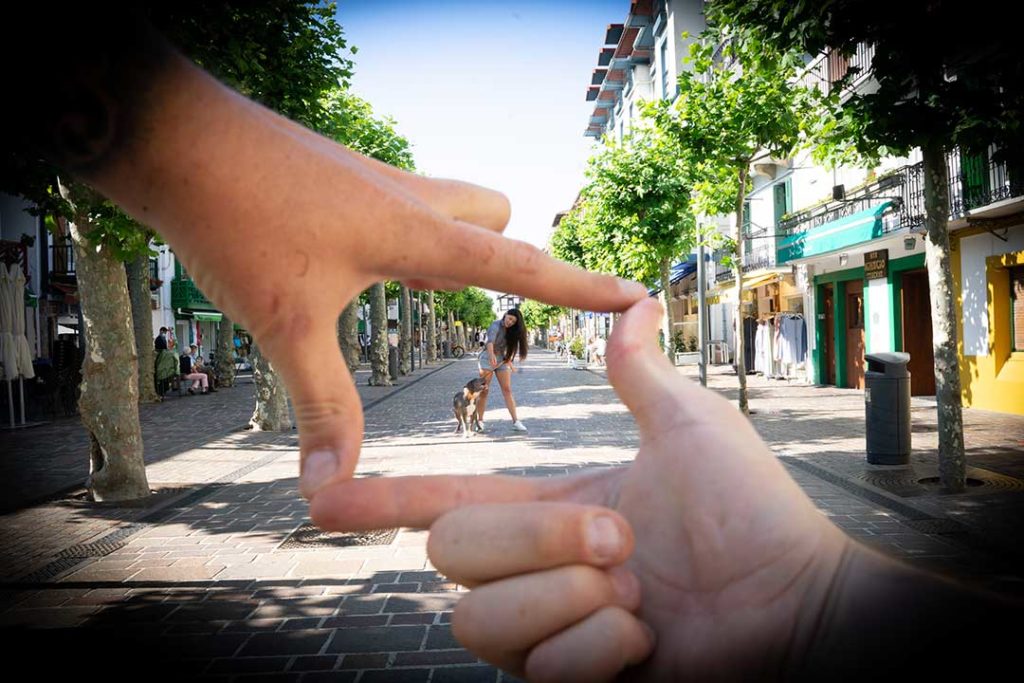
Now slowly move your hands nearer to your face, keeping them the same distance apart, and notice how the view within the frame expands as your hands get closer:
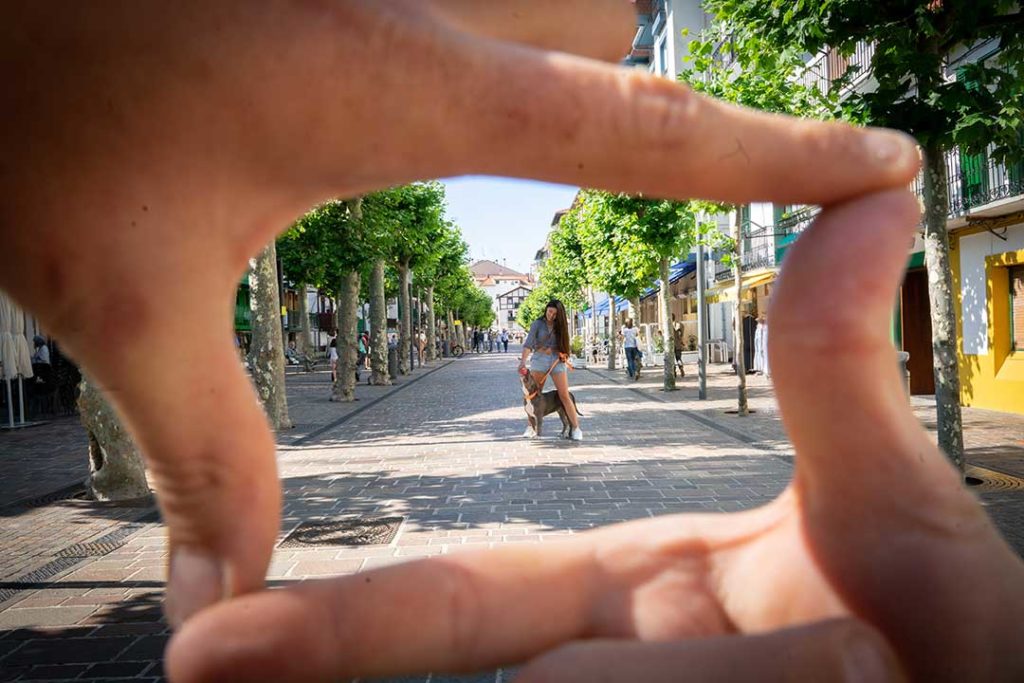
At the most basic level, lenses work in the same way. Like blinkers, or a tube blocking out part of the camera’s field of vision.
A long tube will show a limited angle of view, while a short tube shows a wider angle of view.
So by moving your hands closer to you, you’ve effectively gone from a long focal length lens (i.e. one with a narrow angle of view) to a shorter focal length (one with a wide angle of view).
In practice, of course, a camera lens is vastly more complex than a simple tube blocking out a portion of the view.
Indeed, most lenses contain multiple advanced optical components, many of them moving; and these create all kinds of variables that are frankly far too complicated for us to worry about here.
For our purposes it’s enough to understand that there’s a lot more going on inside a camera lens than is visible from the outside.
For this reason, though, it’s important not to confuse focal length with the exterior physical length of the lens itself.
In fact, it’s common to find two different models of lens that, to look at, you would say are totally different in length, but which are in fact the same focal length. This is because it’s the complicated inner workings of a lens that dictate its focal length, not its exterior dimensions.
In essence, though, to you or I as photographers, focal length simply means “am I looking down a long tube, or a short tube?”
With that said, the kind of tube we look through influences the images we can shoot with it in a whole host of other ways too.
We’ll take a look at these in a second. But first we need to consider another important focal length-related point that often confuses new photographers.
Does Sensor Size Influence Focal Length?
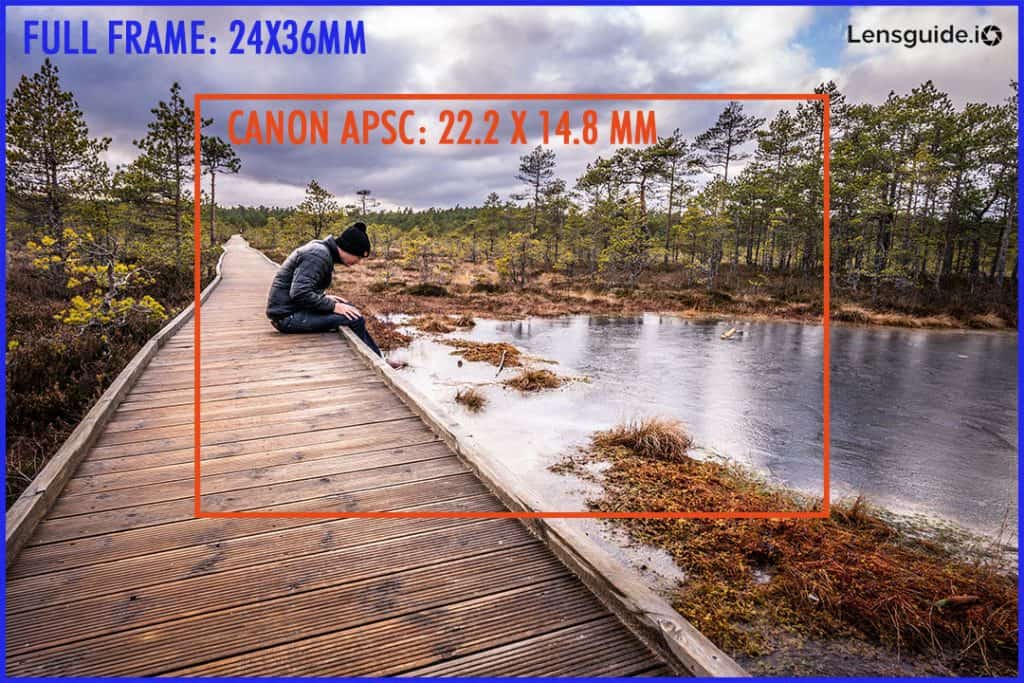
Different camera makes and models come with different sized sensors. Does a camera’s sensor size change the focal length of the lens it’s used with?
The short answer is no; as I already mentioned above, focal length is determined by the distance between a lens’s focal point and the camera’s sensor. And as a camera’s sensor – whether big or small – is always positioned in the same place, this measurement is not altered by the size of the sensor.
Having said this, while the focal length of a lens does not change depending on the sensor it’s used with – a lens with a focal length of 50mm is always a 50mm lens – the size of the image area a given camera’s sensor is capable of capturing is another matter entirely.
Indeed, the size of a camera’s sensor dictates the degree to which it will be able to capture the image projected onto it by a given lens.
For example, a 35mm full-frame sensor will be able to capture nearly the entire image area projected a compatible lens; whereas a smaller “cropped” sensor may only be able to capture a small portion of this image area.
That being the case, it’s important to keep in mind that when I talk about the field of view created by a given lens here – for example, wide or narrow – I’m specifically referring to its effect when used on a 35mm full-frame camera.
Just keep in mind that this field of view will change if the same lens is used on camera with a different size sensor.
Again though, sensor size makes no difference to focal length. But it does dictate the degree to which a camera will be able to capture the image area produced by a lens of a given focal length.
And in practice this often means that in order to produce a similar field of view on camera B (cropped-frame) as on camera A (full-frame), a different focal length lens may be required.
What Practical Difference Does Lens Focal Length Make to a Photo?
Size of Subject/Distance of Subject
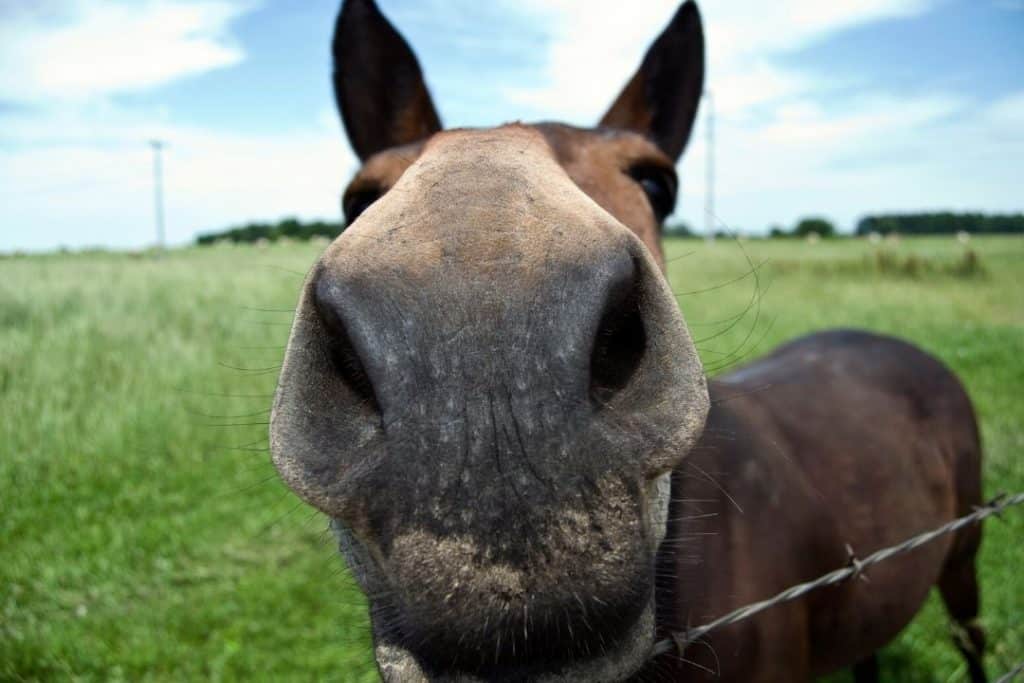
We already covered the first part of this point earlier; all other considerations being equal, a short focal length results in a smaller subject, a long focal length makes for a bigger subject.
Photograph a building with a very long focal length lens, and you might not be able to get all of it in the frame.
But photograph the same building with a very short focal length lens, and it may appear extremely small and be surrounded by other scenery.
Of course, if I use the word “may” here, it’s because focal length isn’t the only thing that determines the size of an object in the frame.
You can easily make your subject appear bigger simply by getting closer to it, or smaller by moving away.
In practice, then, if we just count how big our building is in terms of the number of pixels it occupies in the frame, you could achieve the same overall size of building when using a long focal length lens as when using a short focal length lens; depending on your distance from the subject.
Confused?
That’s because I’ve deliberately chosen to talk about the subject as if it were a single element of a photo; a building in a landscape, or a person in a portrait, for example.
And in this case it’s true that you could get the subject – the individual building, person, or object – to appear the same size, regardless of the lens you use.
But if we instead think of the subject as the entire scene – buildings, people, objects, background, foreground, all together – then the result will be very different depending on the focal length that we use.
And what will change is the relationship between all these elements.
Still scratching your head? I’ll explain this in greater depth in the next section.
Perspective
People frequently talk about the change in perspective created by different focal length lenses. And you’ll often see people saying that a certain lens “distorts” the scene.
As an example, a long focal length lens is said to create a “flattened” perspective, with distances seemingly shortened.
So a person photographed on a very long focal length lens might appear to have a tree growing out of their head; when in reality the tree is positioned a considerable distance behind them.
Perspective makes the person and tree appear closer together than they really are:
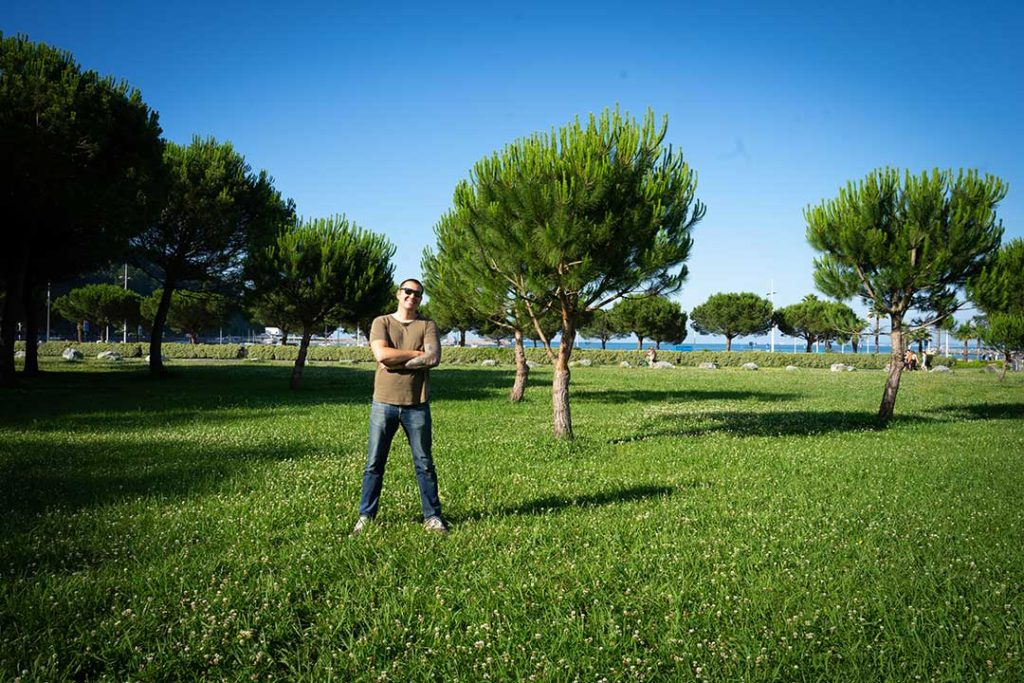
At the other end of the scale, a short focal length lens will create a much greater feeling of depth, with the distances between elements exaggerated.
In this case, an object that is only a couple of feet behind the main subject may appear to be very distant:
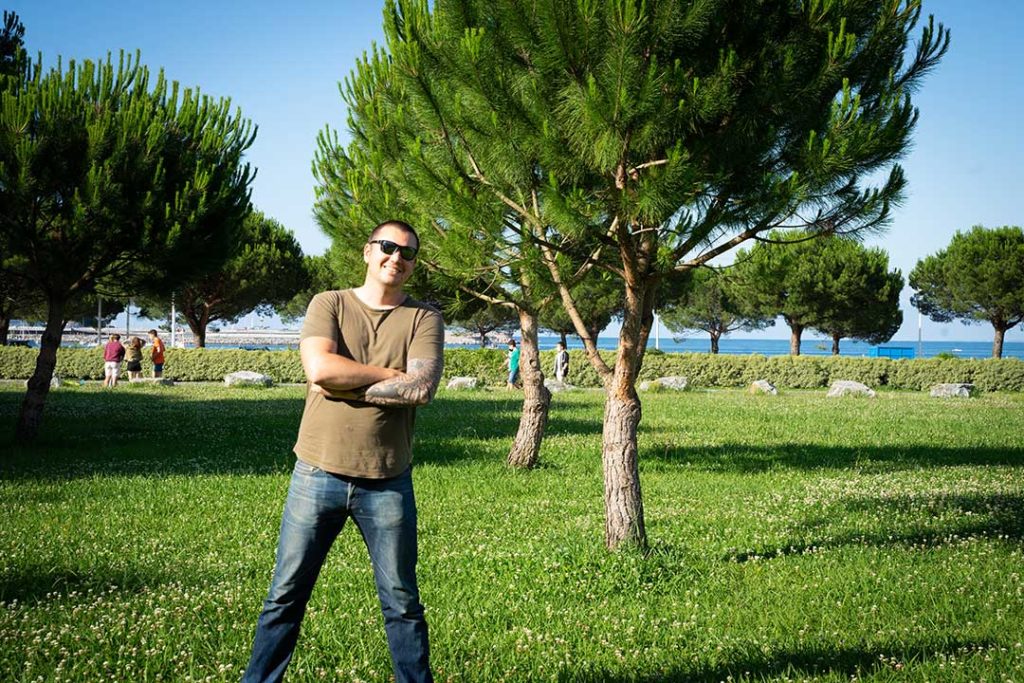
The thing is, though, this way of talking about focal length is technically incorrect.
To be clear, the above paragraphs do offer a pretty accurate description of the differing results you can expect when using either short or long focal length lenses.
The thing to understand is that in reality it’s not directly the lens that causes this change in perspective.
Rather, it’s the act of moving closer or further away from the subject (which in turn is an indirect effect of using a particular lens) that causes a flattening effect or creates an increased feeling of depth.
if that still sounds confusing, think about what happened above when moving your hands closer to your face.
Try it again, but this time imagine that there is a line connecting each hand to the point between your eyes.
See how the angle of these two lines changes as your hands get closer to you?
When your arms are fully extended, the line from your eyes to each hand is projected almost directly in front of you:
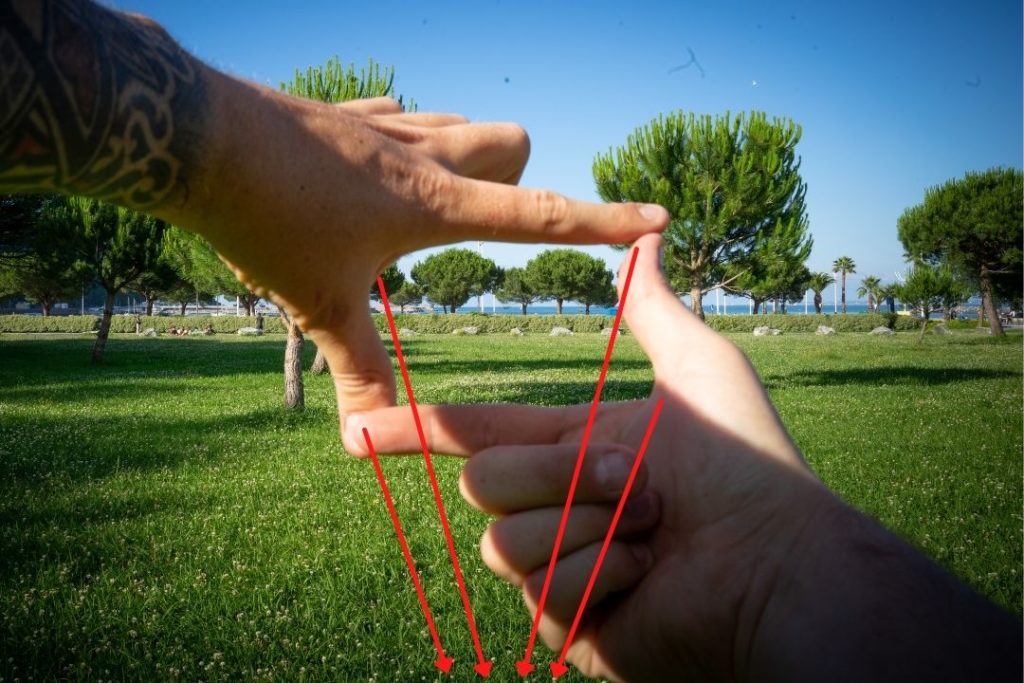
But as your hands move towards you, they are gradually positioned at an ever more oblique angle in relation to your face:
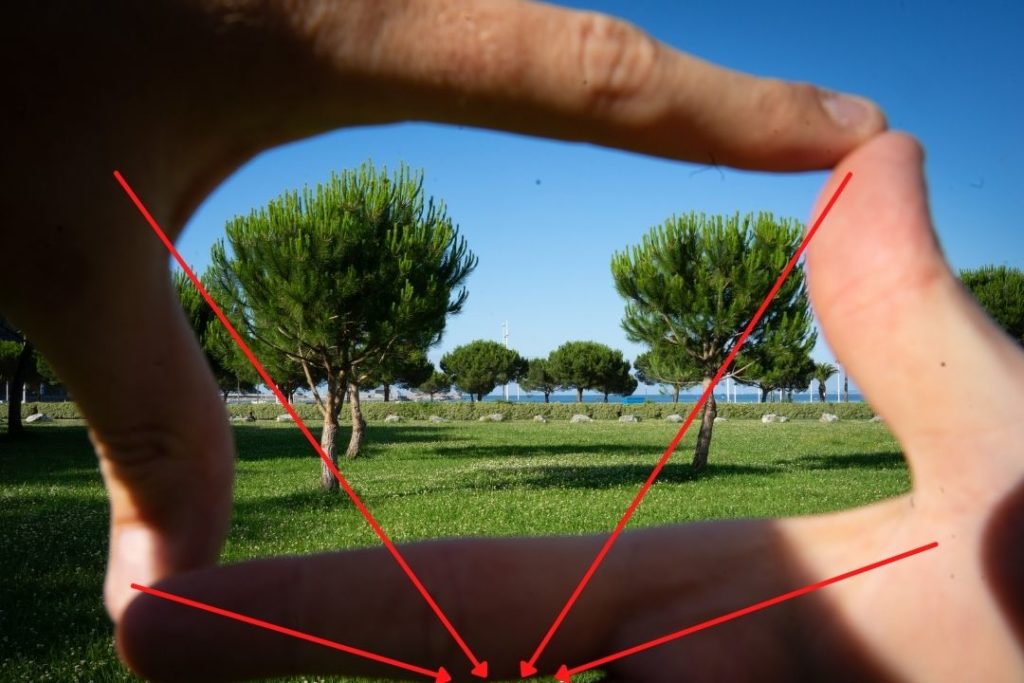
These lines – from eyes to hands – simulate the angle at which light enters a lens according to the distance from the subject.
The closer the lens is to the subject, the more extreme the angle of light.
It’s not the lens distorting the perspective, but subject-lens distance creating the perspective distortion.
If your eyes were capable of focusing more closely on a subject without becoming cross-eyed, you would see the same perspective distortion in real life too.
With that said, if we want to keep things simple rather than getting caught up in technicalities, we can indeed say that using a long focal length lens will create a more flattened look, whereas a short focal length lens will tend to exaggerate the relative distance of objects within a scene.
As mentioned above, then, it would be possible to photograph the same building with both short and long focal length lenses and yet still get the building to occupy the same number of pixels in the frame.
But the results would be very different in terms of perspective.
I.e. the relationship between the building and other elements within the frame would dramatically alter.
More specifically, a short focal length lens would exaggerate the distances between the building and other elements, while a long focal length lens would appear to compress them.
Converging Parallels
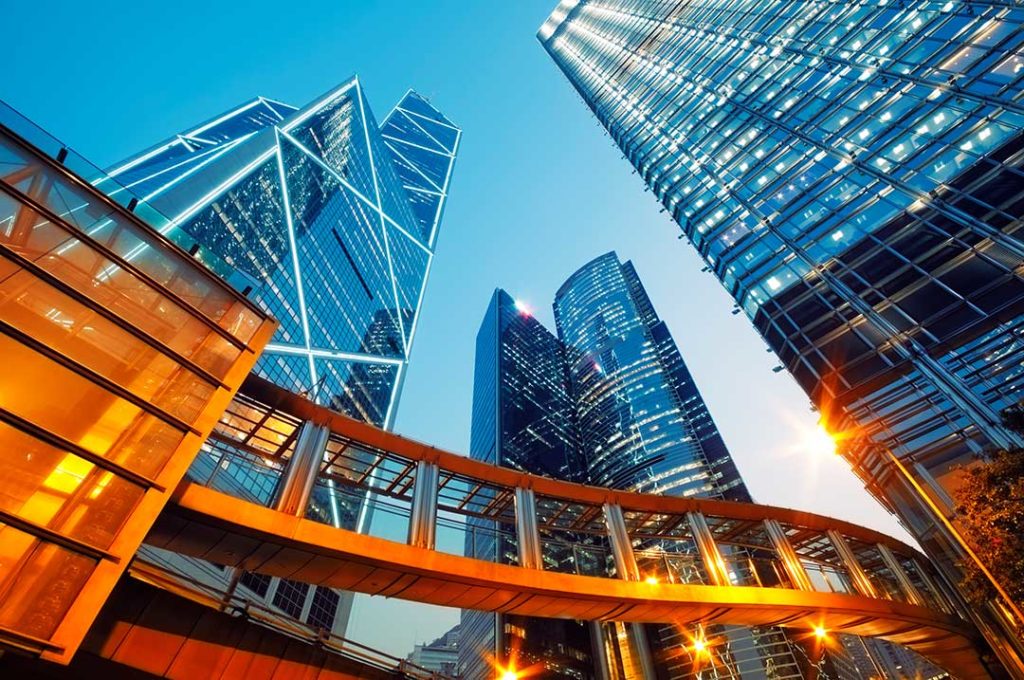
On a related note, there would also be another more subtle side effect here too.
Assuming we’re not talking about an unusually low building (or an unusually tall photographer), the distance between the camera and the top of the building will likely differ from the distance between the camera and the bottom of the building.
And because of these variations in distance, light from these areas will also enter the lens at different angles.
This can lead to a phenomenon where parallel lines appear to lean inwards or outwards.
So, for example, when photographing a tall building from ground-level, the sides of the building will typically appear to converge towards the top.
And if we photograph the building from up close, this effect will be much more noticeable than when photographing it from far away.
As above, this distortion is not caused by using a particular focal length of lens, but due to subject-lens distance.
Once again, if you look at a building with your naked eyes, the distortion will also be evident.
Of course, because we know that the average building is unlikely to be narrower at the top than the bottom, our brains compensate for this effect. As a result we think we see a building with parallel walls. But if you visually estimate the width of a building at the bottom and the top, you’ll find that the dimensions don’t match.
Try it!
- Hold a finger out in front of you and note where on your finger the bottom of the building ends.
- Now move your finger up so it’s aligned with the top of the building instead; you’ll soon see the difference in perceived size.
Again, the difference will be much more evident the closer you stand to the building.
And as you’re just looking at the building with your naked eye now, this is clearly not a phenomena caused by lens optics.
Having said that, if we want to photograph a building without ending up with converging parallels, choosing a longer focal length lens will permit us to stand further away from the building while still filling the frame with it.
The end result of this would be reduced perspective distortion.
This difference in perspective associated with long and short focal length lenses is probably the most difficult part of focal length for new photographers to get their heads around.
So don’t worry too much if this part seems unclear at first; it always becomes easier to understand once you have gained a little more practical shooting experience with a variety of different lenses.
Depth of Field
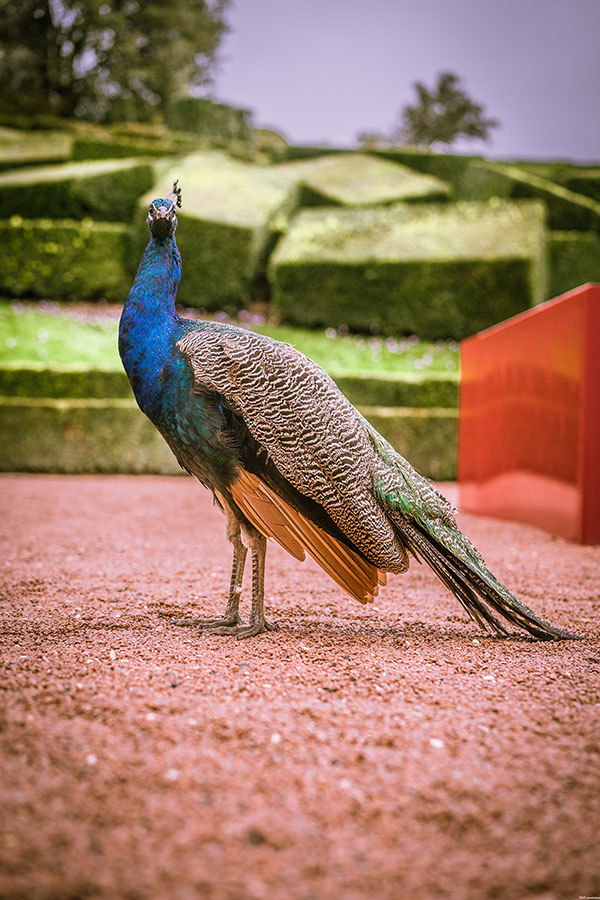
That’s the most difficult part out of the way, But when it comes to understanding the varying effects of lens focal length, there’s still one other important consideration we need to look at; depth of field.
The term depth of field refers to the degree to which areas in front of and behind the main point of focus in a photograph will also be rendered sharply.
- A very shallow depth of field is one in which little other than the point of focus itself appears sharply rendered.
- Whereas a photo exhibiting a very deep depth of field may show all of a scene – from extreme foreground through to infinity – in sharply focused detail.
As you likely already know, the depth of field of a given image depends on a combination of factors.
Lens aperture plays a large part in determining depth of field; with a wide aperture contributing to a shallower depth of field, and a narrow aperture resulting in a deeper depth of field.
Relative distance between camera, subject, and background also influence depth of field.
Beyond these two main considerations, however, depth of field is also influenced by lens focal length.
In fact focal length is such an important factor in determining depth of field that the same aperture setting used on two lenses of different focal lengths will produce quite different depth of field.
There are two main points that you need to take away from all this:
1) The longer the focal length of a lens, the more difficult it becomes to achieve a very deep depth of field, and the more likely it is that the depth of field produced will be shallow.
2) At the other end of the scale, a very short focal length lens will create a deep depth of field with ease, but will likely not be suitable for achieving a very shallow depth of field.
In practice this means that a relatively fast aperture setting that we might normally associate with a shallow depth of field – such as f/2 – may not produce a very shallow depth of field at all when used on an extreme wide angle lens.
Although to some degree this will also depend on the other factors involved, such as distance from subject.
Similarly, although we might expect a small aperture opening such as f/22 to produce a very deep depth of field, its ability to do so will be vastly reduced when using a very long telephoto lens.
The Most Common Focal Lengths and Their Uses
By now you should have a good grasp of the ways in which lens focal length can influence photographic outcomes.
However, the purpose of explaining all this rather dry and complicated technical info is not merely to gain knowledge for knowledge’s sake, but so that you can put this information to good practical use.
Different focal length lenses are appropriate for different uses, or will produce quite different results when used for the same purpose.
In photography there is rarely ever a “right” or “wrong” way of doing things; only outcomes that coincide with the photographer’s intentions to a greater or lesser degree. I.e. do what you like, but make sure that everything you do is intentional rather than accidental.
In order to better equip you to choose the right focal length for the job, what follows is a run-down of various lens focal lengths, their main characteristics, and some of their most common uses.
Ultra Wide Angle (12-24mm)
Lenses with a focal length of somewhere between 12 and 24mm are commonly referred to as “ultrawides.”
Their angle of view is extremely wide, permitting you to capture a broad vista in a single frame – even without there being much distance between camera and subject.
This makes ultrawides particularly useful when working in an enclosed space; such as with interiors and architectural photography.
Indeed, many smaller indoor environments can only be captured in their entirety by using a lens with an extremely short focal length.
Of course, by working so close to your subject, you can expect to produce images that display very evident perspective distortion.
Extremely short focal length lenses will also struggle to produce anything other than a very deep depth of field; making them less useful for when you wish to separate a subject from its background.
However, despite – or perhaps because of – these traits, ultrawides are often used by photographers shooting extreme sports. The attraction being, firstly, the dramatic perspective distortion associated with very short focal lengths; as this can make for some highly dynamic and exciting images.
Secondly, the deep depth of field typically created by ultrawides can be a real advantage when shooting action, as it makes accurate focusing much less critical.
Ultrawides are often also used by a variety of other image makers, shooting everything from the Milky Way to documentary photography and vlogs.
Wide Angle (24-35mm)
More moderate wide angle lenses typically have a focal length of somewhere between 24 and 35mm.
With 28mm being a common focal length for regular use.
Lenses within this range of focal length permit you to include quite a lot of a scene within the frame, but with less of the perspective issues associated with ultrawides.
While it can still be difficult to achieve a very shallow depth of field with a wider lens such as a 24mm, by the time you get to a focal length of 35mm, bokeh backgrounds may be relatively easy to produce.
Although this will to some degree also depend on other factors such as maximum aperture and closest focus distance.
Wide angle lenses within the 24 – 25mm focal range are quite versatile and can be used for a variety of photographic uses; everything from street, events, and documentary photography through to architecture, commercial photography, and weddings.
With their wide angle of view and typically deep depth of field, lenses within this range are also the tool of choice for most landscape photographers.
Wide angle lenses strongly exaggerate distance, so you would need to be fairly close to your subject in order to produce a head and shoulders portrait.
This would of course result in some pretty noticeable perspective distortion. And as big noses and prominent foreheads are rarely flattering, wide angles tend not to be the lens of choice for most portrait photographers.
Standard Lens (40-60mm)
A lens with a focal length of somewhere between 40 and 60mm is commonly referred to as a standard lens.
The most frequently encountered varieties of standard lens being 50 or 55mm versions.
The reason this focal length is considered “standard” is that it approximates the angle of view we humans see with our eyes in everyday life.
To be sure, human vision is technically quite a lot wider than this. But if you’ve ever tried taking in the details at the periphery of your field of vision, you’ll likely have found that there wasn’t much there beyond a vague blur.
So yes, we can certainly perceive a great deal outside of the relatively narrow field of view offered by a 50mm lens, but these perceptions are soft and inaccurate; if our eyes were marketed as a wide angle camera lens, you can be that there would be an awful lot of returns!
In practice, then, a standard lens more approximately corresponds to what we can see clearly with our eyes.
This makes the field of view and perspective offered by a 50mm lens very familiar to us. You could even say that it offers a way of looking at the world that is relatively “neutral.”
As a result, photographers who are interested in producing images that work merely on the merit of great content and photographic skills – rather than due to flashy optical trickery – will often favor a standard lens over the more dominant perspectives offered by ultrawides and telephotos.
Standard lenses are moderate in all aspects; from the angle of view that they produce to their ability to create either a shallow or deep depth of field.
Blurred backgrounds can typically be produced with relative ease, but so too can images that are sharply focussed from front to back – all depending on the chosen aperture etc.
This makes standard lenses extremely versatile. And a 50mm (or equivalent) lens has its place in pretty much every photographer’s bag – irrespective of genre.
Short Telephoto (70-105mm)
Once we move beyond the middle-ground of a standard lens, we’ve effectively tipped the balance into new territory.
Now we move from those lenses that offer a wide angle of view but struggle to throw the background out of focus, into the terrain of lenses that offer a relatively narrow field of view and have no problem creating background blur, but which can’t be expected to produce a deep depth of field at any aperture setting.
Clearly a lens of this focal length is unlikely to be of much use when photographing interiors, for example. But it can be a real asset when you need to separate your subject from the background.
For this reason, lenses within the 70-105mm range are often referred to as “portrait lenses.”
They offer just the right angle of view to permit shooting headshots with a flattering perspective, while also creating good separation from the background.
Beyond this, though, short telephoto lenses are often also used in other genres such as food, product, still life, sports, fashion, and nature photography.
Many lenses within this range of focal length are what are known as “macro” lenses. A true macro lens being one that offers 1:1 magnification. Such lenses are highly useful for jewelry, food, and nature photography, among other genres.
Telephoto (105mm and Beyond)
Beyond the focal length of classic portrait lenses, we move into regular telephoto territory.
These are lenses that provide a high degree of magnification, and produce supremely blurred backgrounds at most aperture settings.
These qualities make telephoto lenses very well suited to situations in which you may need to isolate individual subjects from their environment, or in which it would be impractical – or even dangerous – to get closer to the subject.
A telephoto lens can offer anything from a focal length of 110 mm through to 300mm, 600mm, or even longer. The sky (and your wallet) is the limit.
Telephoto lenses are often used by photographers shooting wildlife and sports.
But they are equally popular in photojournalism and among events photographers.
Final Thoughts
The topic of focal length can often appear somewhat confusing at first.
But by working your way through this guide, hopefully you now have a solid understanding of the topic.
Indeed, if you’ve come this far, you should now know precisely what we mean by the term focal length; have a clear grasp of the way in which different focal lengths influence photographic results; and not only be aware of the main lens focal lengths available to you as a photographer, but also understand what are their most common practical uses.
Of course, the topic of focal length is vast and can be almost as deep and complicated as you want it to be.
And for the sake of brevity and ease of understanding, I’ve naturally had to leave out some important information here and/or simplify it slightly.
So if you have any questions ,or would like to know more about any specific area of the topic, please let me know in the comments and I’ll try my best to respond.

